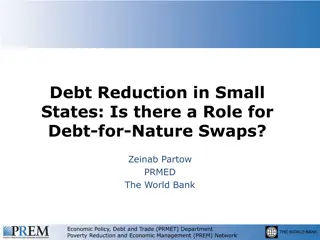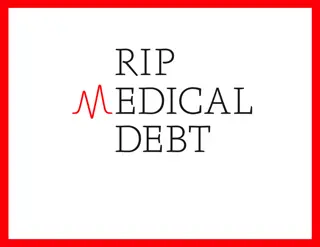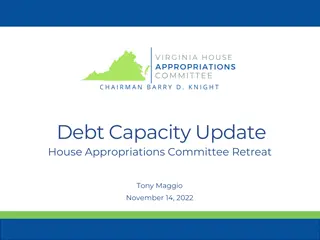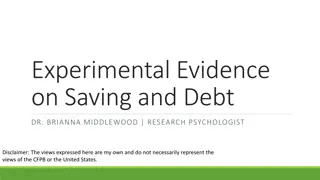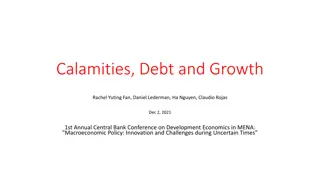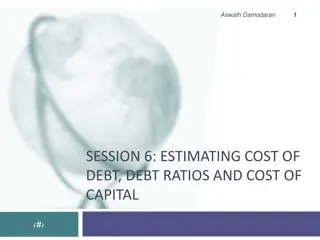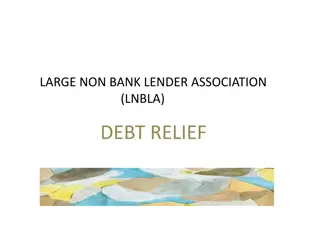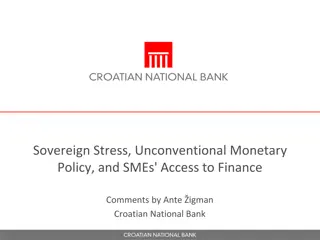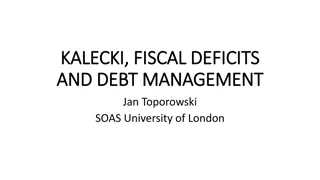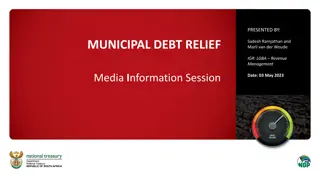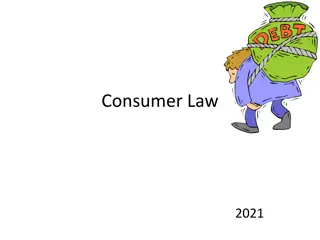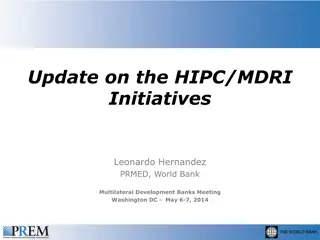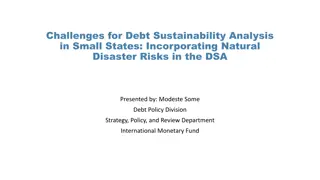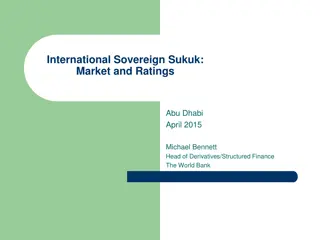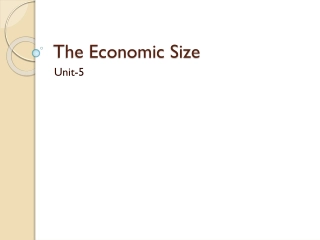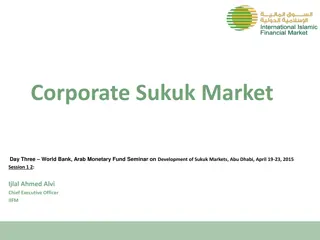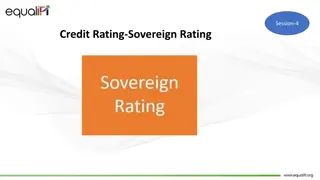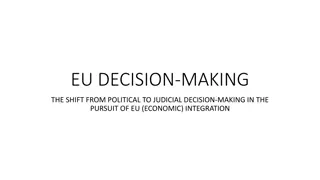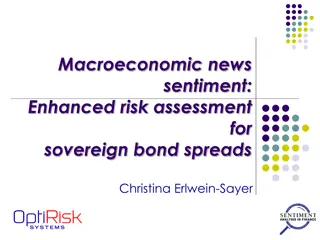Rethinking Sovereign Debt: Implications for Global Economies
Explore the complexities of sovereign debt in large advanced economies and EMDEs, analyzing key factors like external debt, currency mismatches, and domestic public debt. Delve into the consequences of traditional "original sin" borrowing practices and potential solutions for managing sovereign debt risks.
Download Presentation

Please find below an Image/Link to download the presentation.
The content on the website is provided AS IS for your information and personal use only. It may not be sold, licensed, or shared on other websites without obtaining consent from the author. Download presentation by click this link. If you encounter any issues during the download, it is possible that the publisher has removed the file from their server.
E N D
Presentation Transcript
Rethinking Sovereign Debt Ugo Panizza The Graduate Institute Geneva & CEPR 19thMacroeconomics and Finance Conference Indira Gandhi Institute of Development Research 16 December, 2021
Outline Facts Interlude on different types of sins Implications for research on sovereign debt If disaster happens Summing up
Outline Facts Interlude on different types of sins Implications for research on sovereign debt If disaster happens Summing up
Historically high levels of debt Especially in large advanced economies Source: own elaborations based on IMF WEO data
In EMDEs less external public debt Especially in large EMDEs share of external debt Source: own elaborations based on IMF WEO and World Bank IDS data
A caveat with debt data (World Bank vs AT statistics) Share of external debt denominated in local currency AT data WB IDS data Source: own elaborations based World Bank IDS and AT data
Larger share of domestic public debt Good things Local currency risk spreads are less sensitive to external factors Currency mismatches are less important Potential positive spillovers for corporate debt market Vulnerabilities Cost/maturity Credibility Crowding out Diabolic loop
Outline Facts Interlude on different types of sins Implications for research on sovereign debt If disaster happens Summing up
(Traditional) Original Sin Eichengreen, Hausmann, Panizza (2003) When countries borrow abroad, they tend to borrow in foreign currency This leads to currency mismatches Currency depreciations are contractionary Hence, limited ability of conducting independent monetary and fiscal policy Lower ratings for any given debt level Response Do not borrow abroad Abstinence Do not borrow in net terms i.e., accumulate reserves to match private sector debt (self-insurance)
Original Sin Redux Carstens and Shin (2019) There is a group of EMs for which the currency risk has migrated from the borrower to the investor These investors care about $ returns Foreign investors face amplified losses as local currency spreads and exchange rates move in lockstep During periods of financial stress, portfolio outflows go hand-in-hand with rising yields and a depreciating currency Their revised portfolio allocations in turn strengthen this correlation The local currency-denominated bonds of emerging markets display greater sensitivity of flows in reaction to shifting financial conditions. The broad dollar exchange rate matters more than the bilateral XR The risk-taking channel of exchange rates is an important determinant of financing conditions faced by emerging market governments
Traditional original sin Key problem: Balance Sheet Effects (stock problem) linked to currency mismatches Key policy implications Try to borrow abroad in domestic currency Original sin redux Key problem: Domestic currency debt flows react to global shocks more than foreign currency debt Key policy implications Develop a large domestic institutional investor base (that is, do not borrow abroad) But many emerging countries don t have such large pools of investors Build Forex reserves (i.e., do not have net debt), this also helps in preventing appreciation and slowing down credit growth, limiting vulnerabilities Limit the boom to prevent the bust But this can have fiscal costs
Outline Facts Interlude on different types of sins Implications for research on sovereign debt If disaster happens Summing up
The Theory of Sovereign Debt (with a bit of trivialization) In EMDEs Rooted in Eaton and Gersovitz s (1980) seminal paper Benevolent social planner who cannot commit to repay (because of sovereign immunity) Lack of commitment makes debt risky and limits ability to borrow If the social planner could commit, the country could borrow more and everybody would be happier The costs of defaults are what make sovereign debt possible Empirical work aimed at assessing the costs of default Originally focused on reputation, but reputation does not matter in quantitative models of sovereign debt
The Theory of Sovereign Debt (with a bit of trivialization) In Advanced Economies Self interested politicians who borrow too much No risk (until recently) Looking for budgetary institutions and fiscal rules that limit temptation to borrow
The Theory of Sovereign Debt (with a bit of trivialization) Why? External versus Domestic Debt No recent defaults in AE (until Greece)
The Theory of Sovereign Debt Challenges Issues with EG-type models Models greatly underpredict actual borrowing (even assuming a long-lived benevolent social planner) And reputation (i.e., exclusion from future borrowing) is almost irrelevant in quantitative models Max level of debt within a quantitative version of standard EG model Assumptions Output cost and reputation Max Ext debt-to-GDP 14.75% Output cost only 13.25% Reputation only 0% Source: Uribe and Schmitt-Gro
Is there evidence for long- lasting reputational effects?
Is there evidence for long- lasting reputational effects?
Is there evidence for long- lasting reputational effects?
The Theory of Sovereign Debt Challenges Issues with EG-type models Models don t do a good job at matching spreads with default probabilities Underplay the role of external financial shocks The difference between EMs and AEs is becoming smaller and smaller More domestic debt in EMs Default risk in AEs
The Theory of Sovereign Debt Challenges More in general, is limited commitment the most important issue in the real world? The consensus went from: countries default too much to: debt restructurings have often been too little and too late (IMF 2013) and just 7 years before I nearly got fired for saying that and .what is a default? For instance, did Colombia default in the 1980s?
The Theory of Sovereign Debt The way forward What about rebuilding the theory of sovereign debt by assuming that countries always want to repay, but sometimes they are unable to do so To an economist rooted in the EG tradition, this sounds almost heretical You can always sell the Parthenon But it is likely to be a better representation or reality There are modelling challenges, but Collard, Habib, and Rochet (2015) is a step in this direction.
We all agree that your theory is crazy. The question that divides us is whether it is crazy enough to have a chance of being correct. Niels Bohr to Wolfgang Pauli after Pauli's presentation of Heisenberg's and Pauli's nonlinear field theory of elementary particles, Columbia University, 1958
Outline Facts Interlude on different types of sins Implications for research on sovereign debt If disaster happens Summing up
If disasterhappens What if we have a wave of sovereign defaults? Is it going to be the 1980s all over again? Different debt structure (bonds instead of bank loans) Free rider issues People care about mark-to-market more than face value A wider and more diverse set of official players AKA China System still missing (no bankruptcy court for sovereings) Good or bad? Protecting countries in the presence of an incomplete financial architecture Legal air cover (Bolton, Gulati, Panizza, 2021)
Outline Facts Interlude on different types of sins Implications for research on sovereign debt If disaster happens Summing up
Summing up Over the last 20 years debt structure has changed Theory needs to catch up There are new vulnerabilities and sources of resiliency linked to this new debt structure The international financial architecture is still lacking
Rethinking Sovereign Debt Ugo Panizza The Graduate Institute Geneva & CEPR 19th Macroeconomics and Finance Conference Indira Gandhi Institute of Development Research 16 December, 2021



